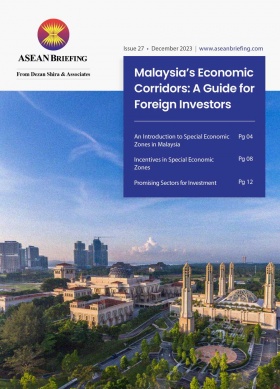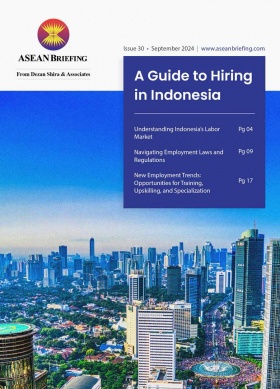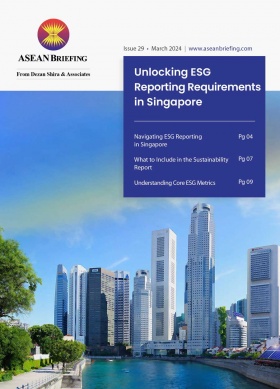The 2024 US Presidential Election: Impact on Southeast Asia Markets
Explore the impact of the 2024 US presidential election on Southeast Asia markets, with respect to shifts in trade policies, geopolitical strategies, and investment trends.
As the US enters the last campaign weeks of the 2024 presidential election, scheduled for November 5, global markets are closely monitoring the potential shifts in policies that may impact trade, investment, and geopolitical stability.
Southeast Asia, one of the fastest-growing regions globally, is highly sensitive to shifts in US economic and foreign policies. With deep trade ties, significant foreign direct investment (FDI), and shared security interests, the outcome of the US presidential election—whether it results in continuity under Democratic President Kamala Harris or a shift with the return of Republican President Donald Trump—will have wide-ranging implications for Southeast Asia’s economies. Currently, global risk consultancies like BMI (a Fitch company) forecast a closely contested race, leaving major markets and political observers worldwide on tenterhooks.
Trade policies and tariffs: Key to export growth
One of the most immediate concerns for Southeast Asian economies is how US trade policies might shift after the election. Historically, the region has been a key beneficiary of globalization and open trade policies, with countries like Vietnam, Malaysia, and Thailand relying heavily on exports to the US for their economic growth. The imposition of tariffs, as seen during the US-China trade war, poses significant risks to these export-driven economies.
A more protectionist US administration could lead to higher tariffs on goods exported from Southeast Asia, particularly in sectors, such as textiles, electronics, and agriculture. These industries are highly sensitive to changes in trade costs, and new tariffs could significantly reduce their competitiveness in the US market. Countries like Vietnam, which have positioned themselves as alternative manufacturing hubs to China, could face reduced demand if trade tensions escalate.
On the other hand, an administration that favors re-engagement in multilateral trade agreements could provide a major boost to the region. The Comprehensive and Progressive Agreement for Trans-Pacific Partnership (CPTPP), from which the US withdrew in 2017, could see renewed interest. US re-entry into the CPTPP would provide Southeast Asian nations with enhanced market access, lower trade barriers, and more robust trade relationships with the US.
Furthermore, trade liberalization would enable Southeast Asia to diversify its export markets, reducing dependence on China and allowing it to play a larger role in global supply chains. ASEAN economies that are part of regional trade frameworks, like the Regional Comprehensive Economic Partnership (RCEP), could see increased integration with the US, resulting in stronger trade flows and improved investment climates.
US-China rivalry: Strategic balancing for Southeast Asia markets
One of the defining features of US foreign policy over the past decade has been its relationship with China. For Southeast Asia, the intensifying rivalry between the two superpowers presents both opportunities and risks. Many ASEAN countries share deep economic ties with both the US and China, leading them to adopt a delicate balancing act in maintaining these relationships.
Should the US government continue its hardline stance on China—which finds support on both sides of the political aisle—Southeast Asian nations could find themselves under increasing pressure to align with one side. The imposition of US sanctions or restrictions on Chinese companies could disrupt the highly integrated supply chains that run through Southeast Asia, particularly in technology sectors like semiconductors and electronics.
However, the US-China rivalry also creates opportunities for Southeast Asian markets. As US companies look to diversify their supply chains away from China, countries like Vietnam, Indonesia, and the Philippines stand to gain from increased manufacturing investment. The “China+1” strategy, where companies maintain a base in China while setting up operations in neighboring countries, has already begun to benefit Southeast Asia, and this trend could accelerate post-election.
In the geopolitical arena, Southeast Asia could see increased US engagement in regional security issues, particularly in the South China Sea. A US administration focused on strengthening its alliances in the Indo-Pacific may deepen its cooperation with ASEAN members, enhancing regional security and counterbalancing China’s growing influence in the region.
Foreign direct investment (FDI): Investment flows at risk?
Foreign direct investment from the US has been a critical driver of growth in Southeast Asia, particularly in sectors like manufacturing, technology, and infrastructure. A change in US administration could significantly influence the flow of FDI into the region, either by encouraging investment through trade liberalization or discouraging it through protectionist policies.
A pro-business US administration that prioritizes free trade and international partnerships is likely to foster stronger investment ties with Southeast Asia. Tech-savvy nations like Singapore and Malaysia, which are positioning themselves as innovation hubs, could see an influx of capital in sectors like fintech, artificial intelligence, and renewable energy. Similarly, countries like Indonesia and Vietnam, with their large populations and rising consumer markets, could attract investment in infrastructure, consumer goods, and digital services.
However, if the US pivots towards economic nationalism and seeks to incentivize companies to bring manufacturing jobs back to American soil, Southeast Asia could experience a slowdown in FDI. Sectors like electronics and apparel manufacturing, which rely heavily on US demand, could see reduced capital inflows, potentially hindering growth prospects in countries like Thailand and Cambodia.
Additionally, regulatory changes in the US, such as new tax incentives or penalties for companies offshoring jobs, could reshape investment patterns. Multinational companies may reassess their strategies for outsourcing and manufacturing in Southeast Asia, depending on the costs and benefits of maintaining overseas operations under the new US policy landscape.
Financial markets and currency volatility
The 2024 US presidential election is expected to have a significant impact on global financial markets, and Southeast Asia will not be immune to the ripple effects. Investors are likely to respond to US election outcomes by reallocating their portfolios, which could lead to capital inflows or outflows from emerging markets like those in Southeast Asia.
The US Federal Reserve’s monetary policy, particularly regarding interest rates and inflation control, will also influence capital flows. Higher interest rates in the US could lead to a stronger US dollar, making it more expensive for Southeast Asian countries to service their dollar-denominated debt. On the other hand, a US government that supports looser monetary policies (the Fed cut interest rates for the first time in four years in September) could result in an influx of capital into Southeast Asian markets as investors seek higher yields in emerging economies. This would benefit Southeast Asian stock markets, particularly in sectors like real estate, banking, and consumer goods.
Green energy and climate change: A new era of cooperation?
Climate change and environmental sustainability are key policy issues in the 2024 US election, with Democrats prioritizing these topics, while much of the Republican discourse remains skeptical. Southeast Asia could play a key role in any future US green initiatives. With several ASEAN countries committing to ambitious renewable energy targets, there is significant potential for collaboration in areas like green financing, technology transfer, and infrastructure development.
A US administration that prioritizes climate action may engage Southeast Asia in building sustainable energy systems, particularly in countries like Indonesia, Thailand, and Vietnam, which are investing heavily in solar, wind, and hydropower projects. Increased US support for these projects could unlock new opportunities for foreign investment and technological innovation.
Moreover, US regulations on carbon emissions and sustainability could affect Southeast Asia’s export-oriented industries. Companies that rely on exporting goods to the US may need to adopt greener production practices to meet new regulatory standards, leading to increased demand for clean energy technologies and sustainable supply chain solutions.
Supply chain realignment and regional opportunities
The global supply chain disruptions caused by the COVID-19 pandemic and the US-China trade war have prompted the US to rethink its reliance on China for manufacturing. Southeast Asia has emerged as a key beneficiary of this realignment, with countries like Vietnam becoming major players in global manufacturing.
If the US election results in an administration that continues to push for supply chain diversification, Southeast Asia is well-positioned to attract even more investment in manufacturing. Sectors like electronics, automotive, and textiles could see significant growth as US companies look to reduce their dependence on China and establish production facilities in countries with lower labor costs.
However, challenges remain for the region. Infrastructure deficits, particularly in logistics and transportation networks, need to be addressed if Southeast Asia is to fully capitalize on these opportunities. US development aid or investment in infrastructure projects could help bridge these gaps, especially in countries like the Philippines, Cambodia, and Myanmar.
ASEAN’s desire for a strong economic pact with the US
Currently, the US plays a significant role in ensuring regional security, particularly through its military alliances and initiatives in the Indo-Pacific. However, the lack of a substantial economic framework has left ASEAN countries looking elsewhere—especially towards China, which has offered extensive economic support through initiatives like the Belt and Road. Without significant concessions from the US, such as more favorable trade terms or reduced barriers to ASEAN exports, the region has limited incentives to commit to US-backed initiatives in areas like labor reforms and environmental regulations.
For ASEAN nations, such reforms are politically sensitive and often require economic benefits in return. Without a meaningful economic package from the US, these countries may continue to hedge their bets, seeking trade agreements that benefit them both from the West and through closer economic ties with China.
Moreover, ASEAN’s focus is not solely on security; countries like Vietnam, Malaysia, and Indonesia are keen to strengthen their manufacturing sectors and integrate more deeply into global supply chains. This goal is hampered by the absence of US trade agreements that would grant them better access to American markets, which are essential for long-term economic stability.
For businesses operating in Southeast Asia, staying ahead of these developments and adapting to new US policies will be key to maintaining growth in a rapidly changing world.
About Us
ASEAN Briefing is one of five regional publications under the Asia Briefing brand. It is supported by Dezan Shira & Associates, a pan-Asia, multi-disciplinary professional services firm that assists foreign investors throughout Asia, including through offices in Jakarta, Indonesia; Singapore; Hanoi, Ho Chi Minh City, and Da Nang in Vietnam; besides our practices in China, Hong Kong SAR, India, Italy, Germany, and USA. We also have partner firms in Malaysia, Bangladesh, the Philippines, Thailand, and Australia.
Please contact us at asean@dezshira.com or visit our website at www.dezshira.com and for a complimentary subscription to ASEAN Briefing’s content products, please click here.







